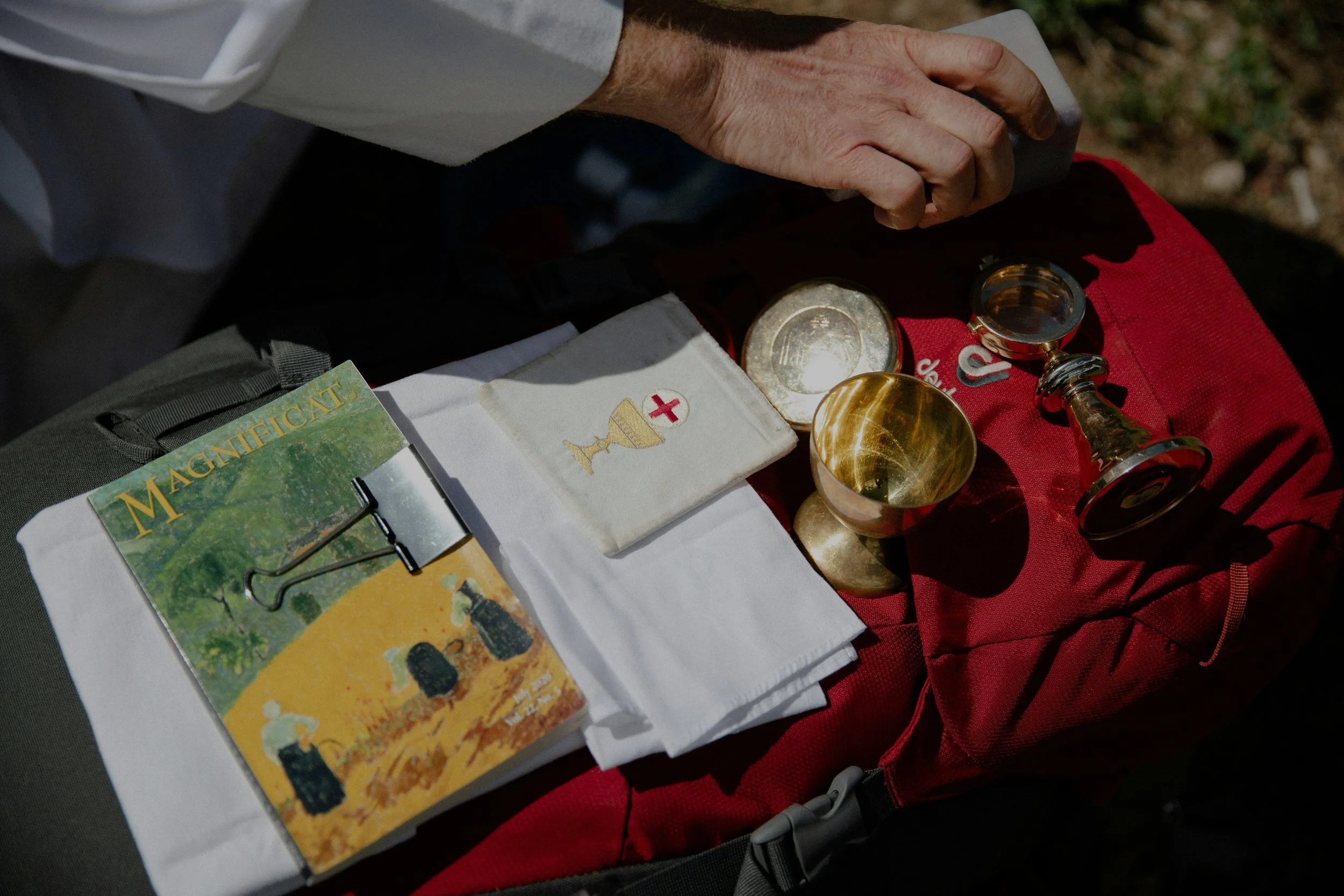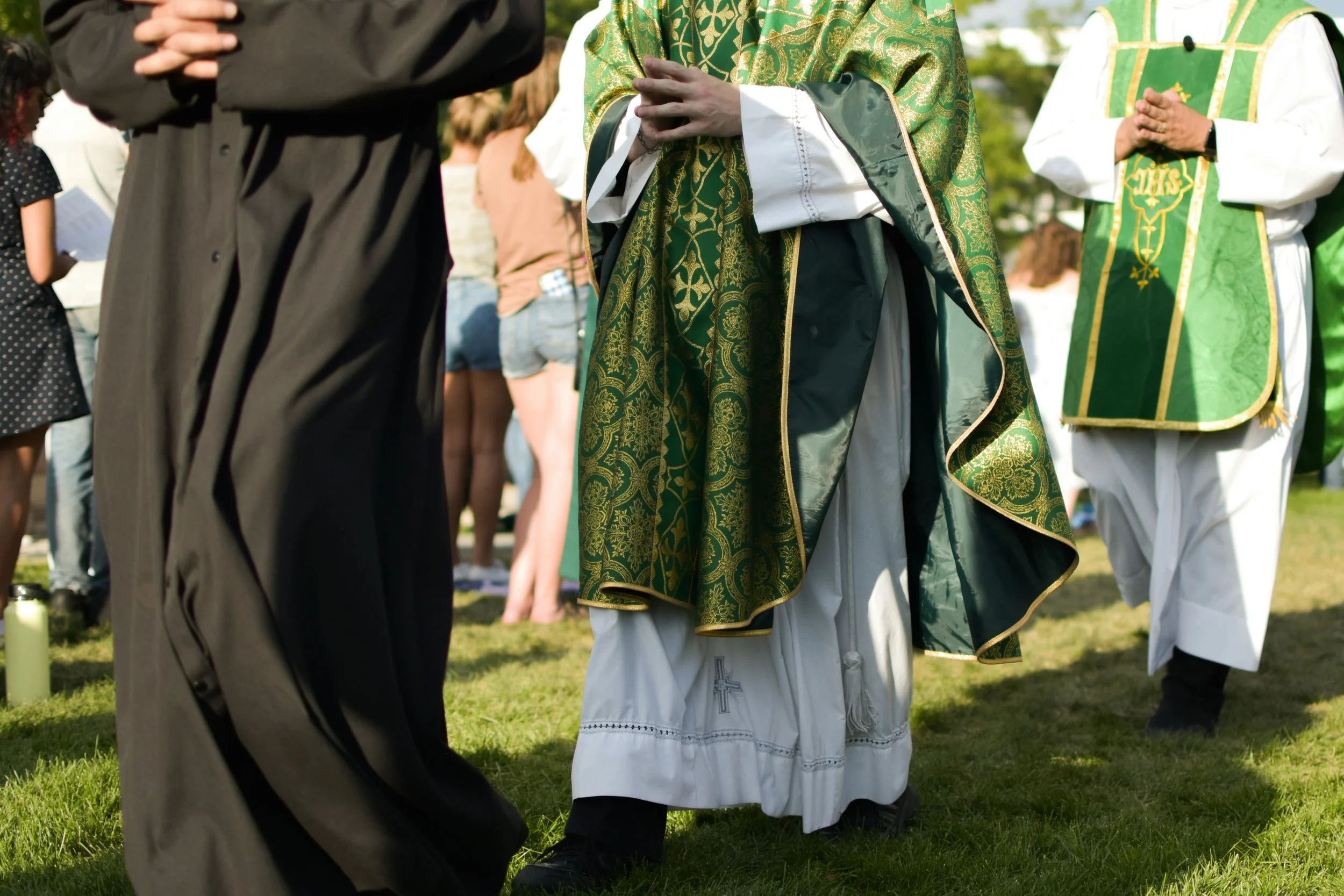
About Anglicanism
Those who worship in the Anglican tradition can be found across the globe. In the US, there has been a recent resurgence in the interest of liturgy, prayer, and sacraments as part of worship and life of the church, which has brought many new worshipers to the Anglican way.
Why the Anglican Tradition?
Here are some reasons people have come to Christ Church:
Liturgy is a participatory rather than performative form of worship.
They are looking for a church that embraces its historical roots in tangible ways.
Sunday worship holds esteem for sacramental and embodied forms of worship that offer healing.
They have a hunger for a slower pace of worship and service rooted in community, prayer, liturgy, and tradition.
They have a desire for elements of Catholic tradition within a Reformed context.
They are looking for healing from spiritual hurt and a safe place to make meaning of faith.
We have people who come together from various traditions, discovering something ancient that feels new.
We emphasize Scripture and the teaching of God’s word, with various forms of prayer integrated into all parts of life.
What is Anglicanism?
Anglicanism is a polymorphous tradition of the church developed out of the reformation of the English Catholic Church. The English church wished to keep itself rooted in the One, Holy, Catholic, and Apostolic church while embracing much needed reform. It is historically identified by persons and forms of worship rather than a system or governance.
Anglicans are most easily identified by how they worship. Their common prayer and worship are marked by the Holy Scriptures and the Book of Common Prayer.
“Anglicanism is a mode of making sense of the experience of God disclosed in the person of Christ. When Anglicanism is at its best its liturgy, its poetry, its music, and its life can create a world of wonder in which is it is very easy to fall in love with God.” — Urban T. Holmes III, What is Anglicanism?
(More on the Anglican tradition in can be found in the Preface of the Book of Common Prayer, pages 1-5.)
Why the BCP?
The Book of Common Prayer (BCP) is one of the many gifts of the Anglican tradition. This book serves as a guide for our gathered prayer life, giving corporate prayers for the beginning, middle, and end of our day-to-day life. These prayers provide a lattice for our faith to grow, individually and corporately.
Anglicans use the Book of Common Prayer as a primary worship text. It is a compilation of Scriptures, prayers, and sacramental instruction that comprises the liturgy of the Sunday service. While this form of liturgy may seem rote or cold if you’ve never experienced it, we encourage you to simply listen, observe, and take in what you notice about the flow and movements of the service.
Anglican Distinctives
-
The Book of Common Prayer (BCP) is our prayer book. Early Anglican faith is rooted in monastic rhythms of prayer called the Daily Office or Divine Hours of Prayer. The BCP has guides for morning, afternoon, evening, family, and compline prayers. It also has collections of prayers, lectionary (or Bible reading) cycles, sacramental and special services, and a guide for the liturgical calendar. The best way to get to know Anglicanism is to spend time engaging with the rhythms of the BCP in personal and corporate devotion. It is our primary formation tool in conjunction with the Bible.
-
Anglican Sunday worship is a celebration of Word and Table. Our Reformed roots are reflected in the first portion of worship, where we praise God, confess, corporately read Scriptures, and have a homily reflecting on the lectionary readings. The second half of worship reflects our Catholic roots by emphasizing the sacrament of the Eucharist, where we corporately participate in the Lord’s Supper each Sunday. Each element of Sunday worship is wrapped in prayer.
Both prayer and worship are written in forms of liturgy. Liturgy merely means the work of the people, or public service. When we pray and worship, we do so in service to the Lord and the world for the sake of God’s Kingdom here as it is in heaven.
-
Anglicans observe the sacraments of Holy Baptism and Eucharist, both commended by Christ himself. We also honor the sacraments of confession (reconciliation), confirmation, holy orders, anointing the sick, and marriage. These are incorporated in various ways through the liturgy and life of the church.
Sacraments, as defined in the BCP, are the “outward and visible signs of inward and spiritual grace, given by Christ as sure and certain means by which we receive that grace.”
-
Though Reformed, Anglicans remained creedal rather than developing their own confession of faith. Therefore, Anglicans profess the Nicene, Apostle’s, and Athanasian Creeds established by the early church. These creeds are foundational to the church’s teachings about the essential doctrines of the Christian faith: the Trinity, the Incarnation, and the presence of the Holy Spirit in the church and the life of individuals. The creeds guide us in interpreting Scripture and the Christian life.
-
Outlined in the back of the Book of Common Prayer, the Thirty-nine Articles of Religion were part of the process of bringing order during the Reformation. The Articles set forth basic Christian doctrine set by the Church of England (the Trinity, the Incarnation, and the work of the Holy Spirit) and teachings that were highly controversial at the time (authority of the church and ministry, justification, good works, and predestination). The Articles can be found on page 772 of the BCP.
-
The Church Calendar, also known as the liturgical calendar, holds the full arc of salvation history within human time. Rather than living in culture’s secular time, Anglicans follow a timeline throughout the year that developed over centuries and centers on the life, death, and resurrection of Christ and the birth of the church. The Church Calendar should be viewed as a formation tool aiding Christians in what it means to walk in step with the Spirit and be made in the image of Christ.
Within the Church Calendar, we observe seasons of worship, feasting, fasting, and prayer. We call these “liturgical seasons.” Primary seasons include Advent, Lent, Easter, and Trinity-tide (Ordinary Time).
The church year also signifies Principal Feasts, notable Sundays, Holy Days, Days of Special Devotion, Days of Optional Observance, lectionary (Scripture) readings, devotional emphasis, and saint days. Each liturgical season is marked by symbolic colors and particular devotions that draw us into deeper worship and devotion of Christ and life in the Spirit. More on the Church Calendar can be found in the Book of Common Prayer (BCP, pp. 687-712).



